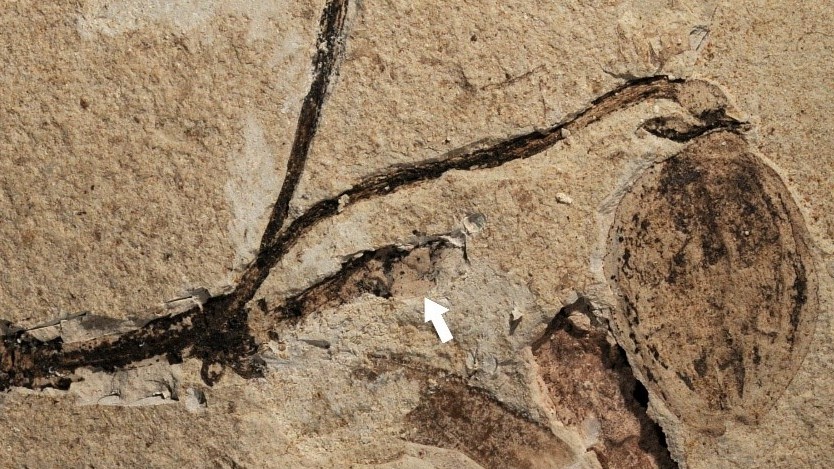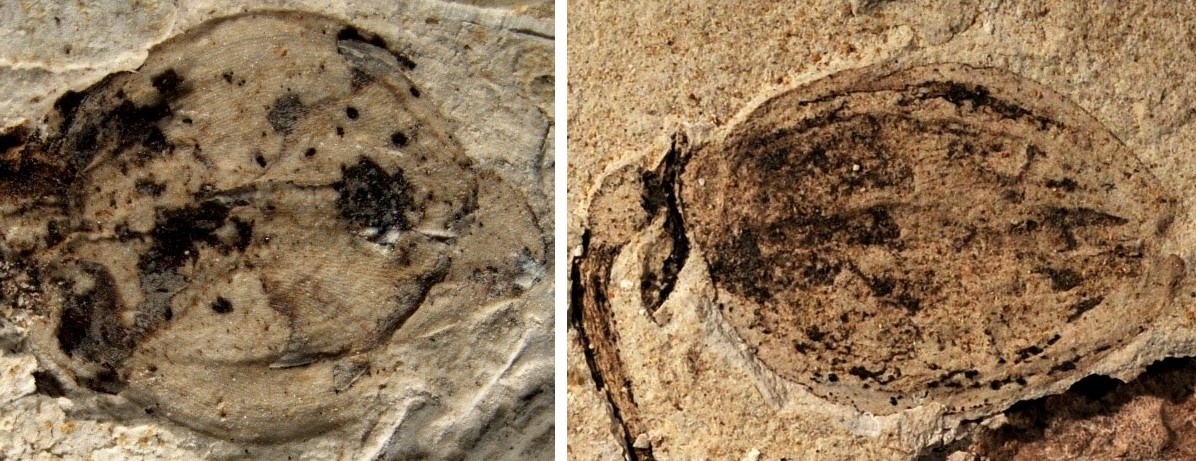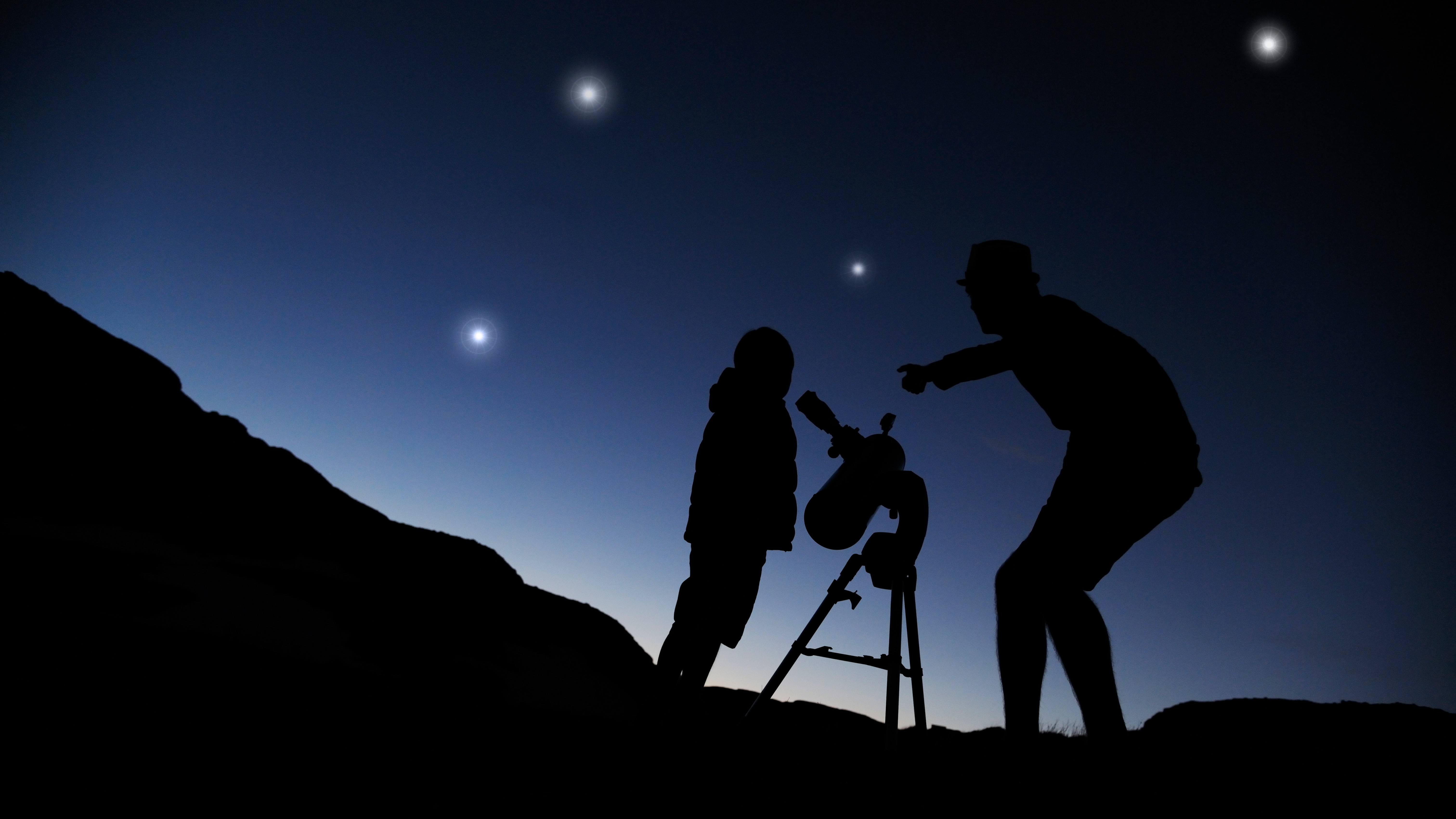164 million-year-old plant fossil is the oldest example of a flowering bud
The discovery changes what we know about the evolution of flowering plants, researchers say.
Researchers have uncovered the earliest example of a flower bud in a 164 million-year-old plant fossil in China. The discovery firmly pushes back the emergence of flowering plants into the Jurassic period, between 145 million and 201 million years ago.
The fossil, which was uncovered in the Inner Mongolia region of China, is 1.7 inches (4.2 centimeters) long and 0.8 inches (2 cm) wide. It contains a stem, a leafy branch, a bulbous fruit and a tiny flower bud around 3 square millimeters in size. The researchers have named the new species Florigerminis jurassica.
There are two main types of plants: flowering plants, known as angiosperms, and non-flowering plants, known as gymnosperms. The flower bud and fruit in the fossil are both clear indicators that F. jurassica was an angiosperm and not a gymnosperm, which was the dominant plant type during the Jurassic period. Until now, fossil evidence has shown that angiosperms did not arise until the Cretaceous period, between 66 million and 145 million years ago, but the new fossil is the most convincing evidence yet that this was not the case.
Related: 10 coolest non-dinosaur fossils unearthed in 2021
"Many paleobotanists are surprised [by the fossil], as it is quite different from what is stated in books," senior author Xin Wang, a researcher at Nanjing Institute of Geology and Paleontology, Chinese Academy of Sciences (NIGPAS), told Live Science in an email. "But I am not so surprised," he added.
The new fossil is not the oldest example of a fossilized flower to ever be discovered. In 2018, in a study published in eLife, researchers described 174 million-year-old flowers from a plant in the genus Nanjinganthus, also found in China, Live Science previously reported.
However, some researchers have questioned whether Nanjinganthus can truly be considered an angiosperm because the flowers were not complex enough to distinguish them from leafy structures seen in gymnosperms, ScienceAlert reported. Flowers are also extremely delicate and hard to fossilize, which can make it hard to tell them apart from other plant material, Wang said.
Get the world’s most fascinating discoveries delivered straight to your inbox.
But the flower bud and fruit in the new fossil prove without a doubt that F. jurassica was definitely an angiosperm, he said. The fossil, therefore, "underscores the presence of angiosperms in the Jurassic and demands a rethinking of angiosperm evolution," the researchers wrote in a statement.
Wang believes that several other known plant genera from the Jurassic period, including Nanjinganthus, Juraherba, Yuhania, Jurafructus, Xingxueanthus and Schmeissneria, could also potentially be angiosperms, but he says there is no way to tell for sure without fossil evidence. Until now, scientists had just assumed those genera were gymnosperms because they arose in the Jurassic.
However, if angiosperms were present during the Jurassic, they would have been very uncommon compared to gymnosperms and geographically isolated, which makes finding similarly well-preserved examples of other flower buds very unlikely, he said.
Alternatively, it is also possible that F. jurassica may be one of the very first evolutionary links between older angiosperm-like plants, such as Nanjinganthus, and more recent true angiosperms found in the Cretaceous period, Wang said.
The study was published online Jan. 6 in the journal of the Geological Society of London.
Originally published on Live Science.

Harry is a U.K.-based senior staff writer at Live Science. He studied marine biology at the University of Exeter before training to become a journalist. He covers a wide range of topics including space exploration, planetary science, space weather, climate change, animal behavior and paleontology. His recent work on the solar maximum won "best space submission" at the 2024 Aerospace Media Awards and was shortlisted in the "top scoop" category at the NCTJ Awards for Excellence in 2023. He also writes Live Science's weekly Earth from space series.




